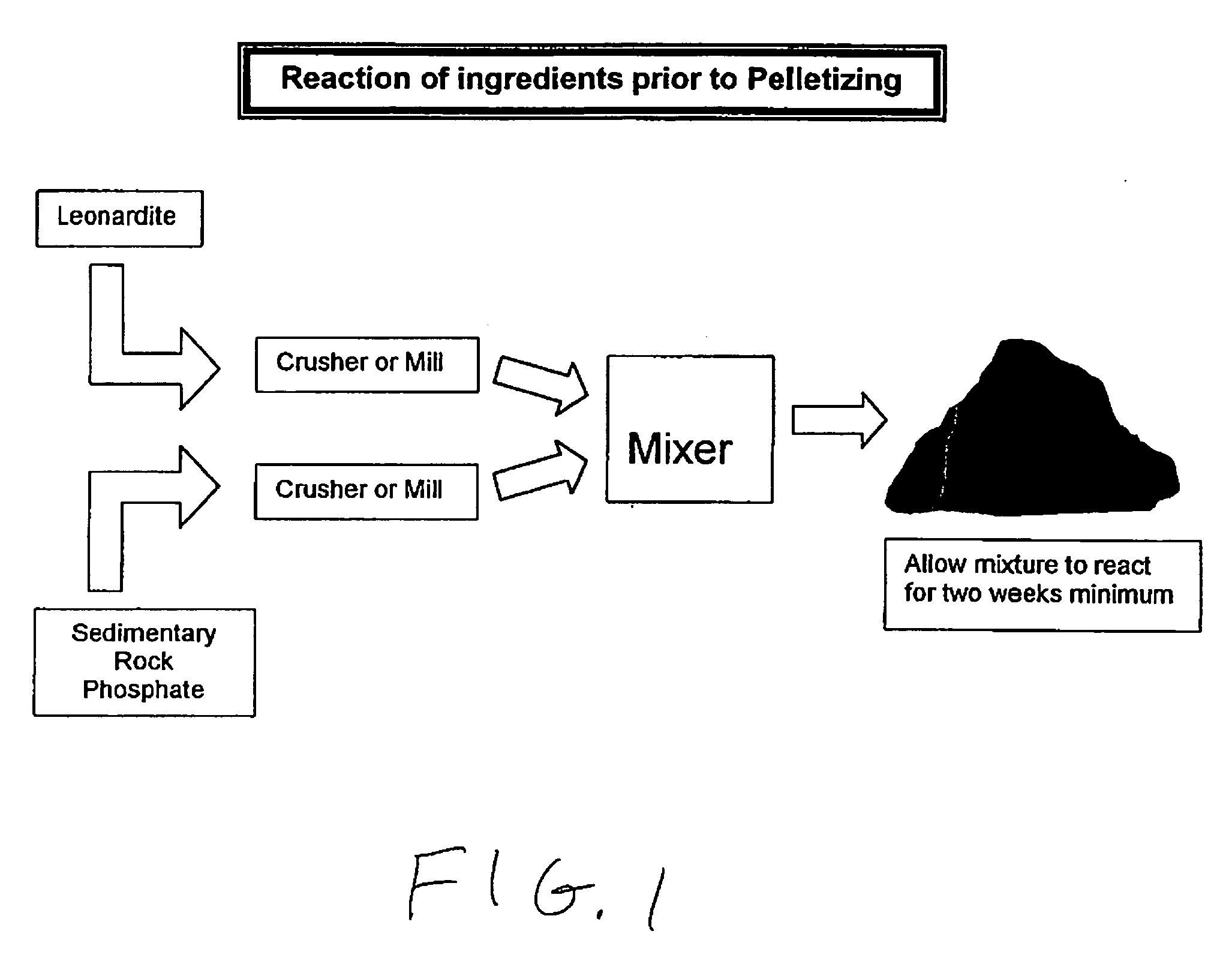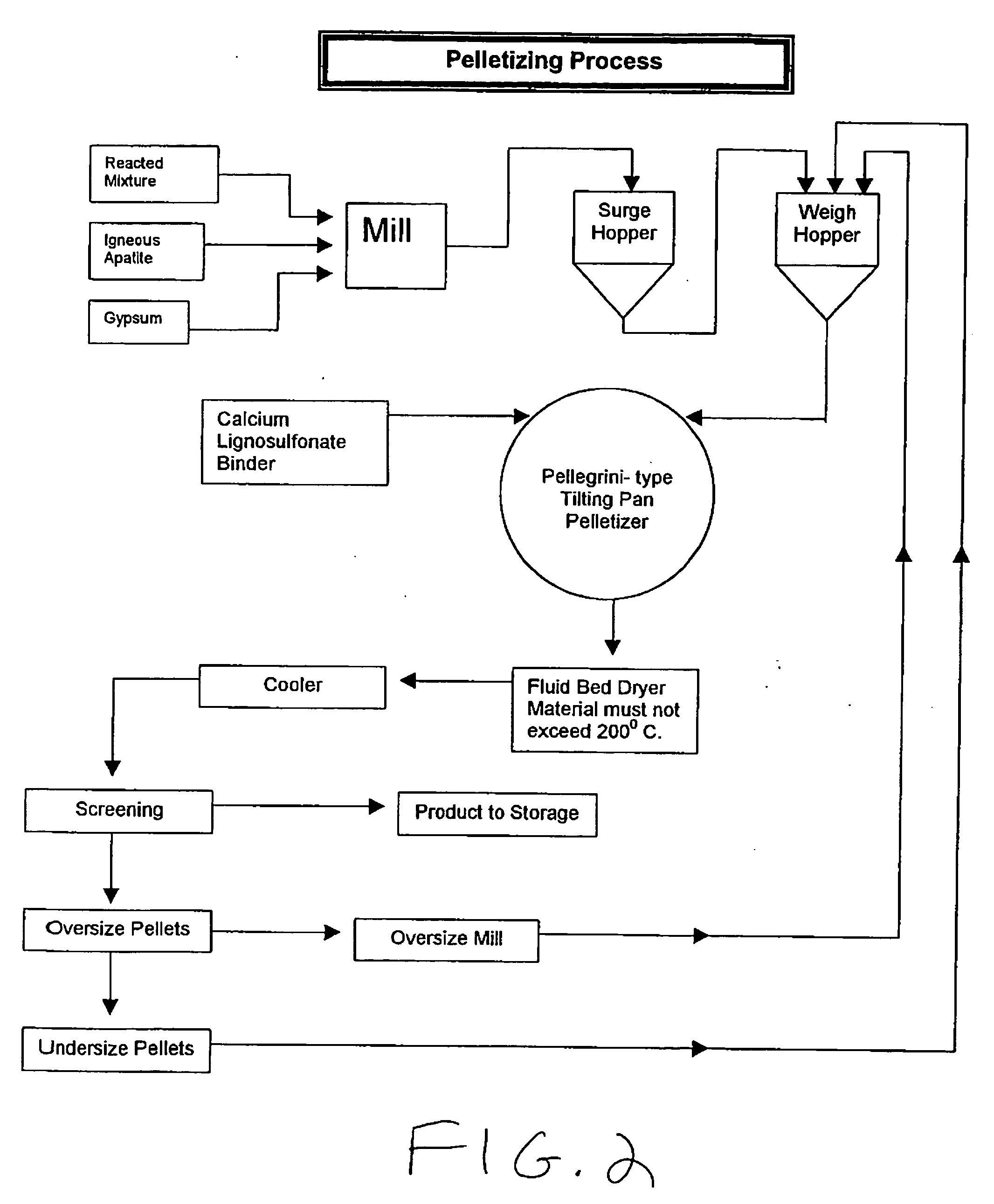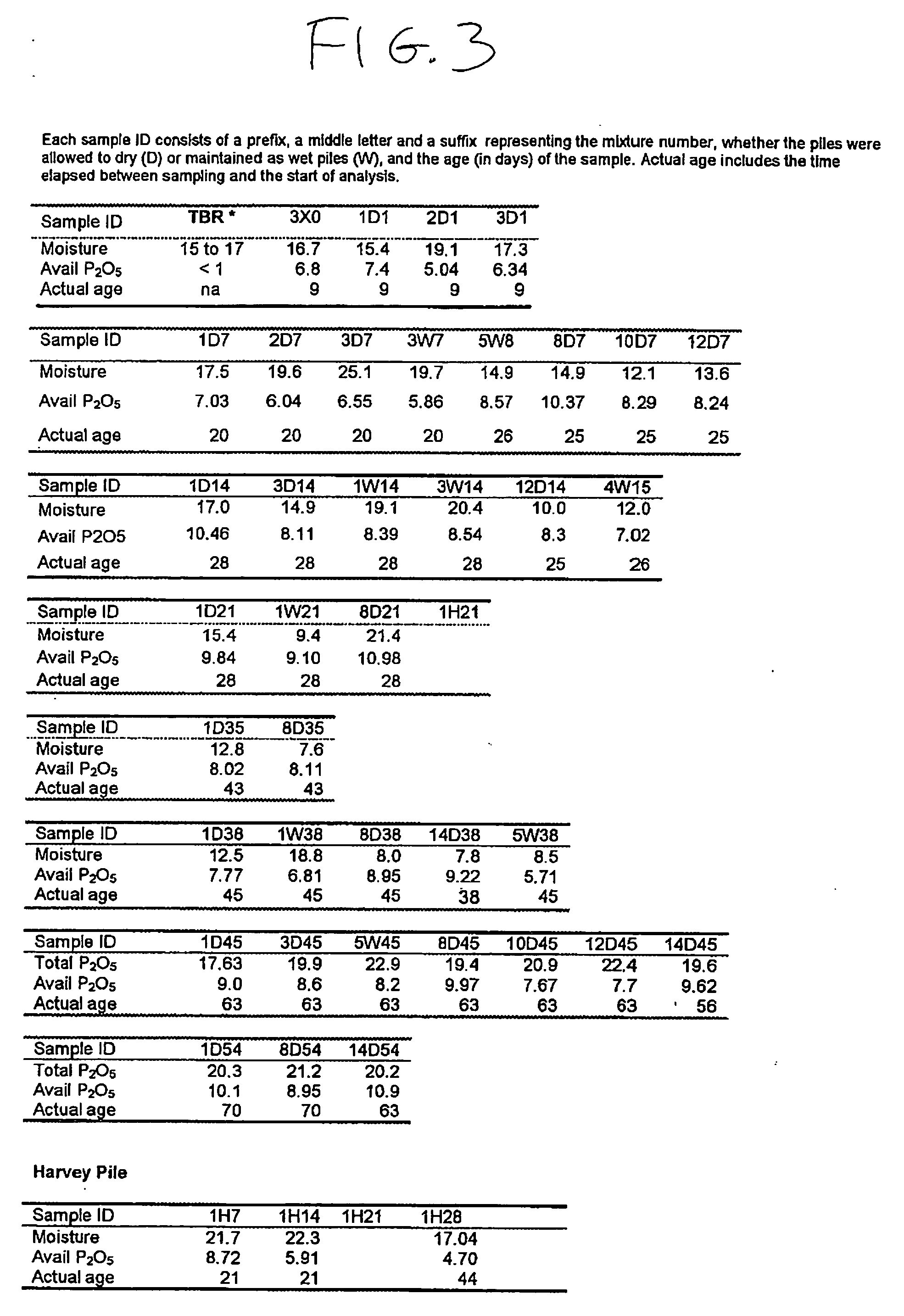Pelleted organic calcium phosphate compositions
a technology of organic calcium phosphate and composition, which is applied in the direction of phosphate fertilisers, dicalcium phosphate fertilisers, agriculture, etc., can solve the problems of humic polymers to fracture and break up, and the use of synthetic substances is not allowed in the agricultural process, and the available nutrients in each fraction are not known
- Summary
- Abstract
- Description
- Claims
- Application Information
AI Technical Summary
Benefits of technology
Problems solved by technology
Method used
Image
Examples
example 1
Increasing Available Phosphate in a Rock Phosphate
[0047] Sedmentary rock phosphate was obtained in the form of was Tennessee Brown Rock (TBR) phosphate. The humic substance (HS) was obtained in the form of Falkirk Leonardite. Both materials were obtained from uncovered outdoor stock piles at the Harvey Products, Inc. facility in Harvey, Iowa.
[0048] TBR is received at the Harvey facility as a crushed, washed and screened ore with a typical moisture content of 15 to 20%.
[0049] The humic substances (HS) were received as a raw uncrushed leonardite ore from the Falkirk Mining Company in Underwood, N. Dak. It was crushed, but not screened, to approximately ¾ inch minus prior to being used in production. The moisture content of the leonardite ore was in the range of 25% to 40%. The humic acid content was about 50%, total carbon of about 33%, ash about 30% and CEC about 180.
[0050] The control was untreated TBR. The first three mixtures were prepared by pouring them back and forth into t...
example 2
Method of Generating a Pellet Composition
[0060] To generate a composition that is high in available calcium, limestone is used as the sedimentary rock. Components are ground and passed through a #5 mesh screen. The limestone is then pre-mixed with the leonardite in a 1:2 ratio by weight and this mixture is allowed to develop for at least two weeks. An amount of gypsum approximately equivalent to the limestone by weight is mixed into the leonardite-limestone mix and finally a binder such as calcium lignosulfate is added. The mixture is pelletized using standard procedures that are well-known in the art and dried at a temperature of less than about 200° C.
example 3
Method of Generating a Pellet Composition
[0061] To generate a composition that is high in available phosphate, a rock phosphate such as Tennessee Brown Rock is used as the sedimentary rock. As in example 2, the components are ground and passed through a #5 mesh screen. The sedimentary rock phosphate and the leonardite are pre-mixed in a 2:1 ratio by weight for two weeks to allow development. Gypsum is added in an amount equivalent to the leonardite by weight and approximately half as much igneous rock phosphate is also added. Finally a binder such as calcium lignosulfate and water are added to aid in the pelletization process. After pelletization by processes well-known in the art, the pellets are dried until the moisture content is less than or equal to 8% at a temperature of less than about 200° C.
PUM
| Property | Measurement | Unit |
|---|---|---|
| temperature | aaaaa | aaaaa |
| colloidal size | aaaaa | aaaaa |
| temperatures | aaaaa | aaaaa |
Abstract
Description
Claims
Application Information
 Login to View More
Login to View More - R&D
- Intellectual Property
- Life Sciences
- Materials
- Tech Scout
- Unparalleled Data Quality
- Higher Quality Content
- 60% Fewer Hallucinations
Browse by: Latest US Patents, China's latest patents, Technical Efficacy Thesaurus, Application Domain, Technology Topic, Popular Technical Reports.
© 2025 PatSnap. All rights reserved.Legal|Privacy policy|Modern Slavery Act Transparency Statement|Sitemap|About US| Contact US: help@patsnap.com



